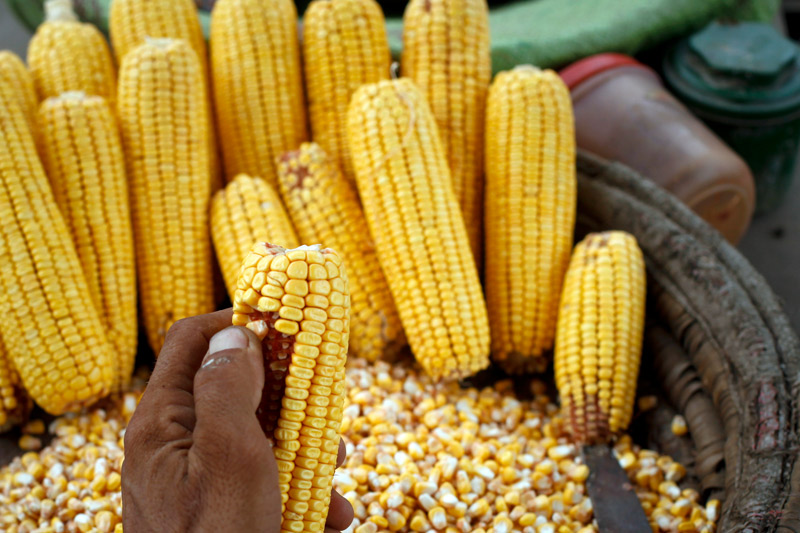Investing.com - U.S. corn and soybean futures regained strength on Thursday, as investors returned to the market to seek cheap valuations after falling sharply on Wednesday.
On the Chicago Mercantile Exchange, U.S. corn for December delivery tacked on 0.34%, or 1.2 cents, to trade at $3.6860 a bushel during U.S. morning hours.
A day earlier, the December corn contract lost 1.28%, or 4.6 cents, to end at $3.6740 amid expectations of record yields across much of the U.S. grain belt.
Prices fell to a four-year low of $3.4800 a bushel on August 12 after the U.S. Department of Agriculture estimated the corn harvest at 14.03 billion bushels, which would break last year's record of 13.93 billion.
The agency also said it expected average corn yields of 167.4 bushels per acre, above an all-time high of 164.7 in 2009.
Meanwhile, U.S. soybeans for November delivery inched up 0.46%, or 4.6 cents, to trade at $10.4260 a bushel.
The November soy contract declined 1.4%, or 14.6 cents, on Wednesday to settle at $10.3800 a bushel, after hitting a 45-month low of $10.3640 earlier in the session.
Prices of the oilseed have been under pressure in recent weeks as ongoing expectations for a record U.S. harvest weighed.
Soybean traders piled on to bearish bets after the U.S. Department of Agriculture estimated this fall's U.S. harvest would reach an all-time high of 3.82 billion bushels on August 12.
Elsewhere on the CBOT, U.S. wheat for December delivery rose 0.45%, or 2.4 cents, to trade at $5.5240 a bushel.
Wheat prices dropped 1.52%, or 8.4 cents, to end at $5.5000 on Wednesday as receding concerns over tensions between Ukraine and Russia eased fears over a disruption to supplies from the region.
Later in the day, the USDA will publish its weekly U.S. grain export sales report for the week ending August 15.
Analysts estimate U.S. wheat sales last week were 350,000 to 500,000 tons, corn sales were 650,000 to 1 million tons, and soybean sales were 850,000 to 1.15 million tons.
Corn is the biggest U.S. crop, followed by soybeans, government figures show. Wheat was fourth, behind hay.
